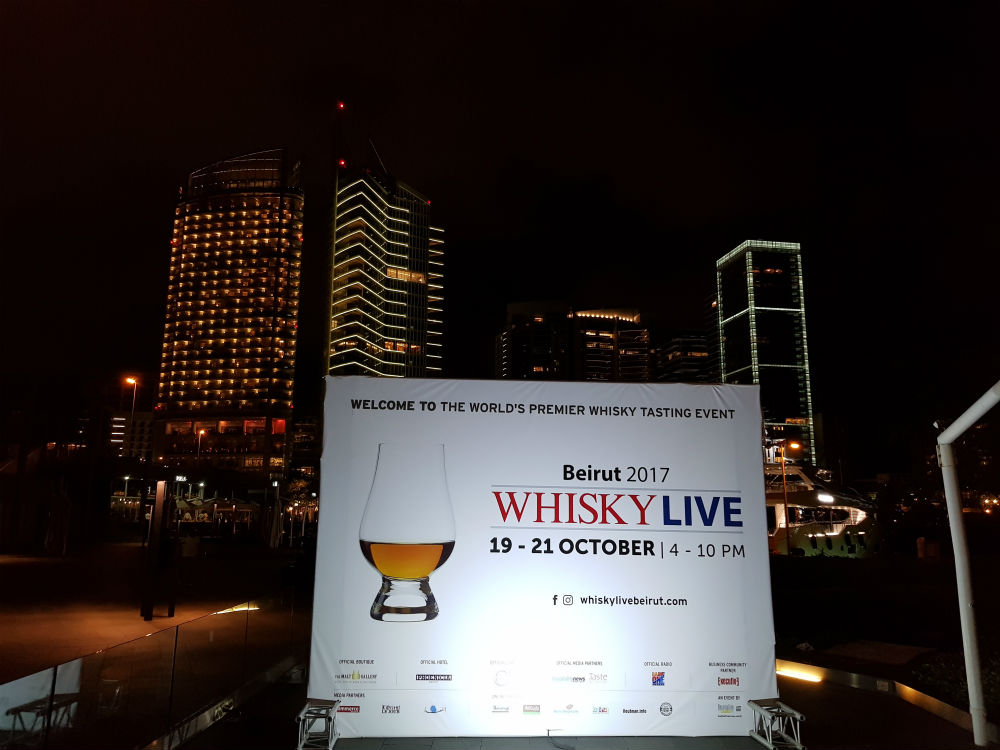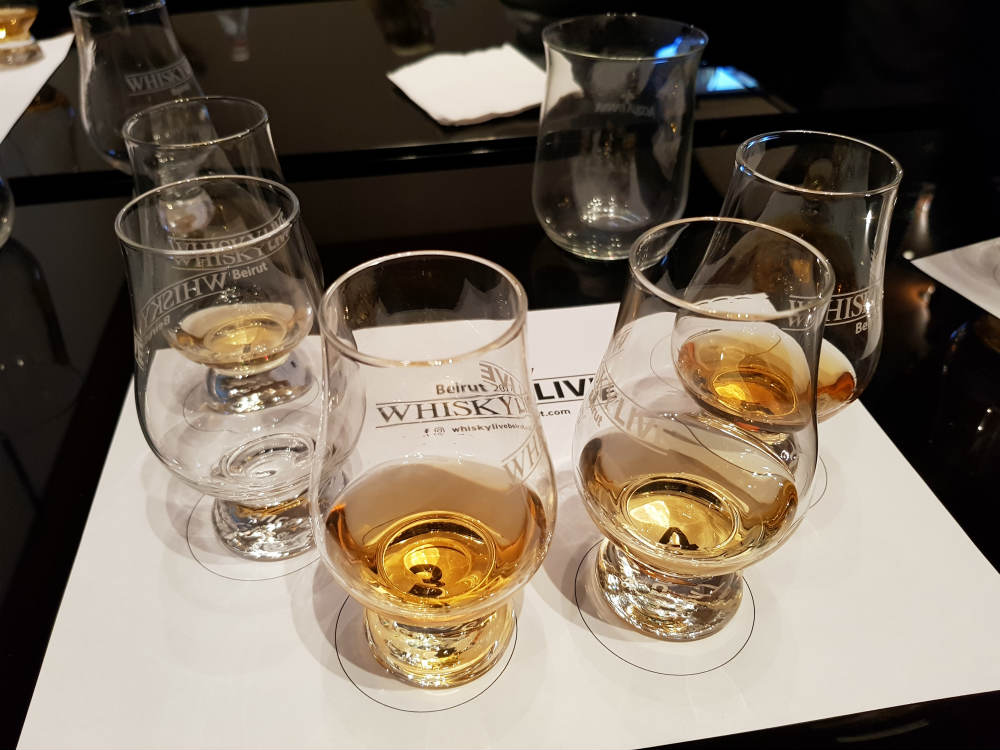I was eager to check out the second edition of Whisky Live Beirut last month, and what got me even more excited was an invitation to one of its most interesting masterlcasses this year: Malts Masterclass by Diageo’s Global Scotch Whisky Ambassador Donald Colville.
Colville’s family history and own life are deeply intwined with whisky distillation, and it was an absolute pleasure meeting him, learning about his life journey with whisky and chat about his taste in malts, which one he loves most and why.
Personally, I’d consider myself still a beginner when it comes to malts. However, that doesn’t mean I haven’t been exploring and experimenting the past couple of years whenever I get the chance. I’d say I’m definitely a malt enthusiast now, and my palate has become experienced enough to at least differentiate between different malts and choose which one I fancy the most.

On another note, I’m glad to see malts becoming steadily more popular among Lebanese drinkers, especially younger ones. Whisky is unfortunately tied to being old here for some reason, and most younger social drinkers resort to vodka and sodas instead of trying to see if they’d prefer a malt. I was one of those young folks who thought that, and I regret not exploring different malts at a younger stage when I could go out and drink more often than I do now.
Perhaps most importantly, I’m learning how to enjoy whisky better now, and how to match it with whatever food I’m serving, as I’ve come to recognize how much of a positive difference than can make.
Colville’s masterclass examined five renowned single malts, of which only three I was already familiar with: Caol Ila, Singleton, Talkiser Storm, Cardhu and Lagavulin.
Some of you might already know this, but for those of you who don’t, there are four different regions when it comes to single malts: Highlands, Lowlands, Speyside and Islands.
Highland single malt is the most vast and diverse, with many types of malts starting out here.
Lowland single malt is known for being somewhat lighter.
Speyside is the heart of the whisky world, and has a variety of choices like the Highland region. Diageo has the biggest number of distilleries in Speyside, around 16 while they have around 7 in Highland.
Islands single malt refers to heavily peated whisky like in Islay, and the slightly saltier, drier and smokier whiskies produced in Campbeltown.

The way I understood it, single malt can be put into four main categories:
– Light & floral
– Fruity & spicy
– Rich & rounded
– Smoky & full bodied
Light ones have fruits as their dominant flavors, with nuts and grassy undertones and fresh-feeling finish. Delicate whiskies have subtle floral and nut-based aromas, creating the unique flavor with sweet grains and light wood. Rich single malts are the boldest, with a warm, spicy, chocolaty feel on your tastebuds. Smoky ones use spices like ginger, while heating and smoking to create the distinctly smoky, aromatic flavor of these types of whiskies.
My favorites are either the rich & rounded or the light & floral single malts. I prefer them over the smoky ones, and I’m definitely the least biggest fan of peated malts.

The five malts presented during Colville’s Masterclass were: CAOL IL, SINGLETON, TALISKER STORM, CARDHU and LAGAVULIN.
Here’s my verdict on the above. The Caol Ila, Talisker Storm and Lagavulin were all smoky single malts. As I mentioned earlier, I don’t like peaty malts, so I didn’t enjoy the Lagavulin. The Talisker and Caol Ila were both smoky and spicy, but I enjoyed the Talisker Storm the most from these three.
Next in line was the Singleton, which I’ve had the opportunity to taste before, and had liked and felt it was a truly great malt on both occasions. The Cardhu was a veritable surprise! It was my first time trying it, and I loved it! It was delightful and light, somewhat sweet but absolutely perfect for drinks with friends at happy hour or on those chilly evenings we’re about to feel in Lebanon!

One of Colville’s slides read:
“Some people will tell you that it’s made to be tasted neat with no ice or mixer, don’t listen to them. Scotch is made to be enjoyed with good company, whenever and wherever and however”
I couldn’t agree more with this statement, and it reminded me of my whisky tasting session at Phoenicia with Makram Salha and Patsy Christie. The complexity of this subject might make you think that enjoying a good single malt is complicated too. It isn’t, and shouldn’t be. Just let your tastebuds be your connoisseur, and don’t feel bad about adding a bit of water or ice to your drink. Be warned though, water or ice can affect the taste and aromas of some of the rarer whiskies so I’d recommend using chilled whisky stones.
Whisky is about the pleasurable experience. You sit down after a long day, pour yourself a drink and you either like it or you don’t. Always drink it the way you prefer, and if whisky on the rocks is your thing, then so be it. Most experts I’ve met recommend you start neat, then slowly work your way up by adding a drop of two of water till you calibrate it exactly the way you like it. Plus, remember, it’s super easy to add water to whisky, but it’s extremely hard to remove that water from your whisky, so be gentle!











[vivafbcomment]